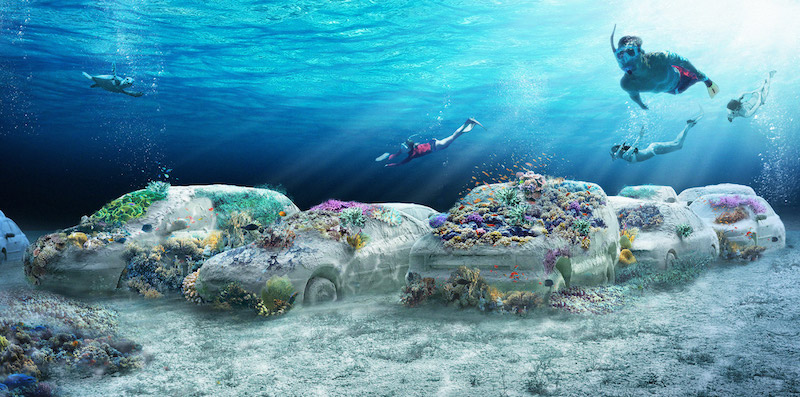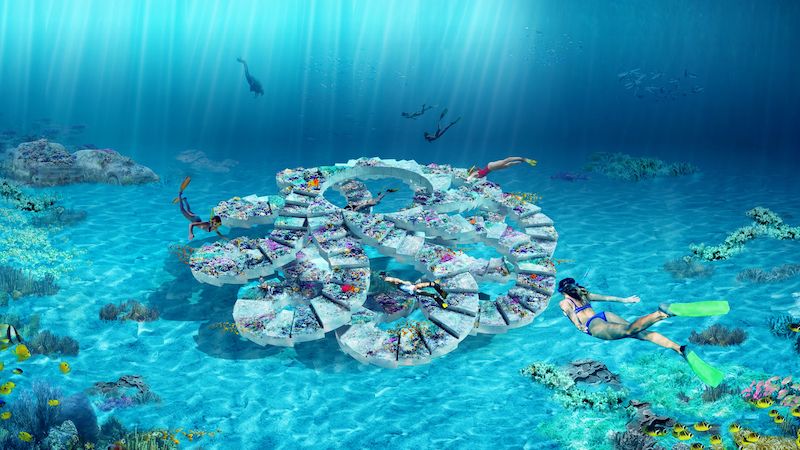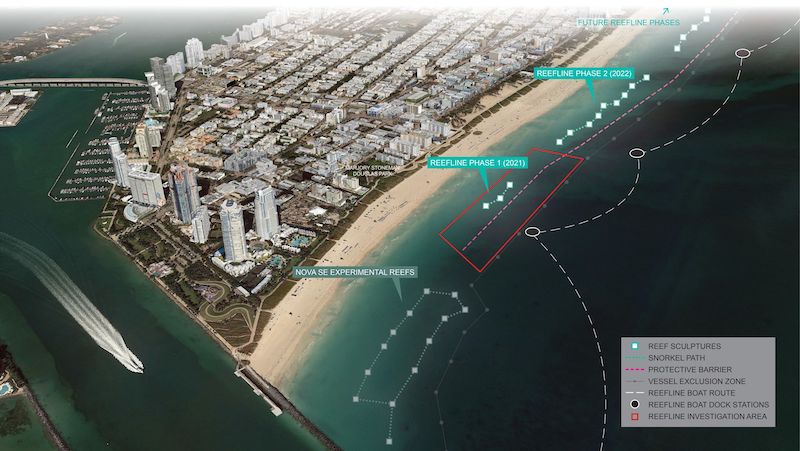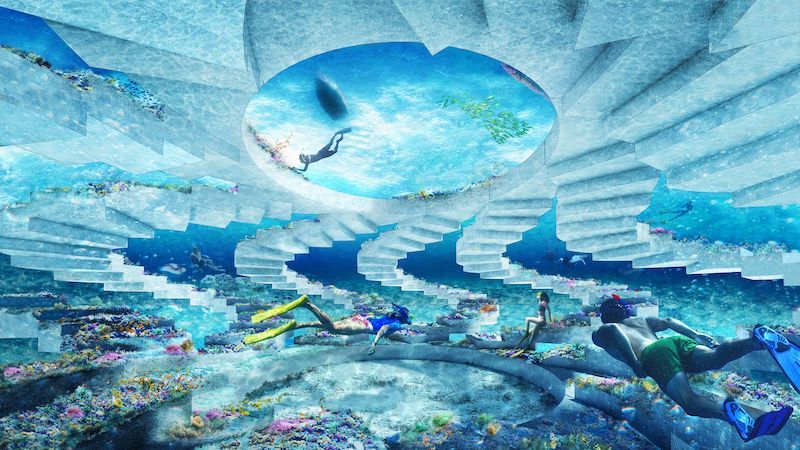The ReefLine will be a new seven-mile-long underwater public sculpture park, snorkel trail, and artificial reef located off Miami Beach’s shoreline. OMA is collaborating with a team of marine biologists, researchers, architects, and costal engineers to design the project’s master plan and a distinct sculpture within it.
OMA has designed a geometric, concrete modular unit that can be deployed and stacked from South Beach to the north, following the topography of the sea bed. The living breakwater is the connective tissue for the overall master plan and will be punctuated by a series of site-specific installations.

The project will be completed in phases. The first mile is slated to open in December 2021 with permanent installations by Argentine conceptual artist Leandro Erlich and Shohei Shigematsu of OMA. Erlich will create Concrete Coral, an installation that will reframe cars and trucks as new vehicles for environmental change.

OMA/Shigematsu’s sculpture explores the nature of weightlessness underwater. A series of sinuous spiral stairs creates a three-dimensional structure reminiscent of marine life. The organic form provides layered zones for coral reef growth and interstitial spaces for exploration. The stairs rotate around a central forum for underwater gathering and activities.
In addition to the artistic qualities, The ReefLine will also provide a critical habitat for endangered reef organisms, promoting biodiversity and enhancing coastal resilience.


Related Stories
| Feb 1, 2012
New ways to work with wood
New products like cross-laminated timber are spurring interest in wood as a structural material.
| Feb 1, 2012
Blackney Hayes designs school for students with learning differences
The 63,500 sf building allows AIM to consolidate its previous two locations under one roof, with room to expand in the future.
| Feb 1, 2012
Two new research buildings dedicated at the University of South Carolina
The two buildings add 208,000 square feet of collaborative research space to the campus.
| Feb 1, 2012
List of Top 10 States for LEED Green Buildings released?
USGBC releases list of top U.S. states for LEED-certified projects in 2011.
| Feb 1, 2012
ULI and Greenprint Foundation create ULI Greenprint Center for Building Performance
Member-to-member information exchange measures energy use, carbon footprint of commercial portfolios.
| Feb 1, 2012
AEC mergers and acquisitions up in 2011, expected to surge in 2012
Morrissey Goodale tracked 171 domestic M&A deals, representing a 12.5% increase over 2010 and a return to levels not seen since 2007.
| Jan 31, 2012
AIA CONTINUING EDUCATION: Reroofing primer, in-depth advice from the experts
Earn 1.0 AIA/CES learning units by studying this article and successfully completing the online exam.
| Jan 31, 2012
28th Annual Reconstruction Awards: Modern day reconstruction plays out
A savvy Building Team reconstructs a Boston landmark into a multiuse masterpiece for Suffolk University.
| Jan 31, 2012
Chapman Construction/Design: ‘Sustainability is part of everything we do’
Chapman Construction/Design builds a working culture around sustainability—for its clients, and for its employees.
| Jan 31, 2012
Fusion Facilities: 8 reasons to consolidate multiple functions under one roof
‘Fusing’ multiple functions into a single building can make it greater than the sum of its parts. The first in a series on the design and construction of university facilities.

















